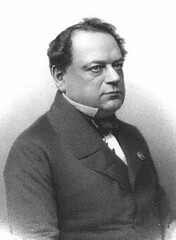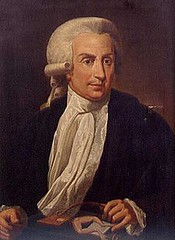
PREV ARTICLE
NEXT ARTICLE
FULL ISSUE
PREV FULL ISSUE
DICK JOHNSON ON ELECTROTYPING IN AMERICA
Dick Johnson submitted a great essay on electrotyping in America. Thanks! I added a couple images from Wikipedia.
-Editor
So little is known about electrolytic casting by American numismatists, yet it is so important in coin and medal technology. Recent comments in The E-Sylum about the British electrotyper, Robert Cooper Ready, has brought this to mind. Electrolytic casting was used by the U.S. Mint since 1851(after Franklin Peale's first experiments as early as 1842). It was in use at the Philadelphia Mint for making coin and medal models for over a century (until gradually replaced by an epoxy method developed for World War II). Did that statement sink in? All U.S. coins made 1851 to 1951 were created with the use of an electrolytic cast pattern. It is that important! Yet, most numismatists think of electrotyping only as a method of making easy counterfeits. They have so much to learn.
This is the concept of electroplating. With the use of a core mandrel the process can make relief forms. This is called electroforming.
A model is made by an artist in clay, wax or plaster. Soft material is copied into plaster to serve as the core mandrel. This is placed into an electrolysis tank and the current is turned on. A complete electric circuit must be formed, from the electric source to the anode, through the electrolysis solution on to the mandrel and back to the source. In early days primitive batteries were used for that electric current. This continued until Thomas Edison gave us commercial electricity in 1889. Back in England, in 1840, two cousins, George and Henry Elkington, improved on Jacobi's process and developed electroplating. They received a patent for silverplating, depositing silver on base metal. This is what Ready learned of to make his electrotypes at the British Museum. The technology crosses the Atlantic and is in use in America. In 1844 Scovill in Waterbury is the first American firm to use electroplating. Rogers Brothers, another American firm, uses this process for silverplating tableware and incorporates the date, 1847, into their trademark. In 1851 William E. DuBois, at the U.S. Mint, learns of this process and begins electrotyping coins. Mint engravers use the same electrolytic process to make patterns, replacing iron foundry casts for the models of devices on coins and medals they are creating. (They add lettering by hand punches later.) Electrolytic casting has ten times the detail a foundry cast has. So it is ideal for coin and medal patterns, for much finer detail. In 1859 a private New York City craftsman, Samuel H. Black, uses this technology to make large plaques, some as large as 18 x 13 inches. He used medals for his model and grouped these with lettering to form his plaques. These were quite thin, so he added lead to the back to give strength to each piece. In 1907 in New York City, Felix Weil, in partnership with a fellow sculptor, Jules Edouard Roine, operate a sculpture shop where they create metal relief sculptures by electroforming their own bas-relief models or those for other sculptors. As Felix works with Roine, his brother Henri Weil works for a pair of German brothers, the Deitsches, who import the first Janvier reducing machine to America. Henri cuts dies for sculptors, as Felix makes galvanos. The Weils were so proficient in these activities they were even asked by U.S. Mint officials to make hubs and dies from Victor Brenner's Lincoln Cent models. Medallic Art Company prospers with that proficiency in electrolytic casting and medal making. My life has become so intertwined with this chain of events and the people involved. The Weils became the Medallic Art Company. I worked for Medallic Art in the 1960s and 1970s. They have recently hired me again, 33 years later as corporate historian. I have researched and written about Victor David Brenner. Last year my partner, Mark Schlepphorst, and I issued a plaquette in honor of Brenner. It also honored the centennial of the Lincoln Cent, and the bicentennial of Abe Lincoln's birth. We commissioned mint engraver Don Everhart to create a portrait of Brenner carving a Lincoln image on a die that he is engraving. I am so proud of that Lincoln Brenner Plaquette. If you are coming to the ANA Boston convention, please stop by our booth, # 1- 2 - 3 - 0. I want to show you that plaquette. Please pick it up and feel the relief. PS: It was struck by Medallic Art Co, with whom we are sharing that booth. I hope to see you there To read the earlier E-Sylum article, see: ROBERT READY AND SONS, ELECTROTYPISTS (www.coinbooks.org/esylum_v13n30a12.html) THE BOOK BAZARREWayne Homren, Editor The Numismatic Bibliomania Society is a non-profit organization promoting numismatic literature. See our web site at coinbooks.org. To submit items for publication in The E-Sylum, write to the Editor at this address: whomren@gmail.com To subscribe go to: https://my.binhost.com/lists/listinfo/esylum All Rights Reserved. NBS Home Page Contact the NBS webmaster 
|

